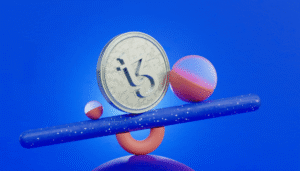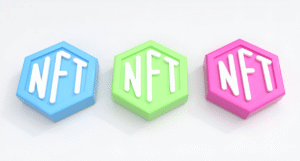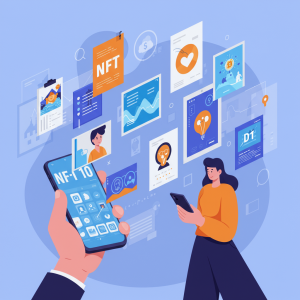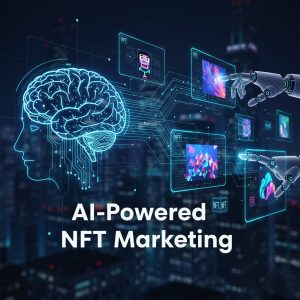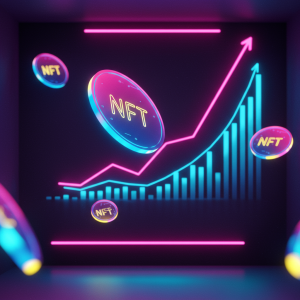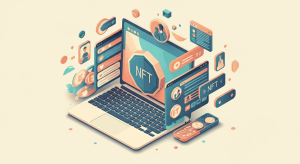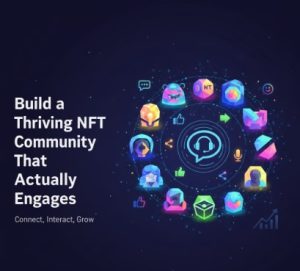Bridging Digital and Physical: The Revolution of Asset Tokenization Through NFTs

The blockchain revolution began with cryptocurrency, evolved through smart contracts, and now enters perhaps its most transformative phase—connecting digital certificates to tangible, real-world assets. Physical asset tokenization through NFTs represents the critical bridge between blockchain innovation and the material world we inhabit daily.
The Fundamental Concept
Physical asset tokenization involves creating digital representations—typically NFTs—that correspond to tangible items existing in the physical realm. These tokens serve as verifiable certificates of ownership, provenance records, or fractional shares of physical objects ranging from luxury watches to real estate properties.
Unlike purely digital NFTs representing artwork or collectibles that exist solely in virtual spaces, tokenized physical assets maintain their material existence separate from their blockchain representation. The NFT serves as a technological layer that enhances traditional ownership with blockchain benefits: immutability, transparency, programmability, and frictionless transfer.
This marriage of tangible value with digital innovation solves longstanding challenges in physical asset markets. Items that historically suffered from provenance uncertainties, ownership disputes, or liquidity constraints gain newfound utility through tokenization.
Implementation Models
Several models have emerged for connecting physical assets to blockchain representations. The simplest approach involves one-to-one tokenization, where a single NFT represents complete ownership of a specific physical item. This model works well for unique objects like artwork, collectibles, luxury goods, or specific parcels of real estate.
Alternative approaches include fractional tokenization, where multiple NFTs represent percentage ownership of a valuable physical asset. This democratizes access to investment-grade items previously available only to wealthy individuals. Through fractional ownership, everyday investors might own tokens representing partial shares in commercial real estate, valuable art collections, or even infrastructure projects.
For goods requiring authentication rather than investment potential, proof-of-ownership tokens focus primarily on verifying authenticity and provenance. These NFTs function similarly to certificates of authenticity but with blockchain’s immutable record-keeping advantages.
Companies like RealT have pioneered tokenized real estate, allowing property investments starting from just $50 through fractional ownership tokens. Similarly, platforms such as Arianee partner with luxury brands to create digital passports for high-end physical products, combating counterfeiting while enhancing resale experiences.
Technical Architecture
The technical architecture connecting physical assets to blockchain tokens requires thoughtful design addressing unique challenges absent in purely digital NFT implementations.
Smart contracts govern the relationship between tokens and their underlying physical assets, establishing rules for ownership transfers, revenue distribution, redemption processes, and dispute resolution. These contracts must account for real-world complexities like regulatory compliance, custody arrangements, and physical asset servicing.
Oracle systems play crucial roles by connecting on-chain data with off-chain reality. These might include human verification services, IoT sensors monitoring physical conditions, or authorized agents confirming state changes in the physical asset.
Authentication mechanisms bridge the digital-physical divide through techniques like embedded microchips, NFC tags, or secure QR codes physically attached to assets. These connections allow verification of an item’s authenticity by linking its physical presence to its blockchain representation.
Storage and custody arrangements for the underlying physical assets introduce another consideration absent from purely digital NFTs. Secure warehousing, insurance coverage, and professional management often become necessary components of comprehensive tokenization solutions. For creators interested in implementing these systems, our team at NFTMarketo provides consultation on appropriate technical architecture based on specific asset categories and business requirements.
Legal Framework
Physical asset tokenization introduces complex legal considerations spanning property law, securities regulation, contract enforcement, and consumer protection. Tokenization projects must navigate multiple legal domains simultaneously while adapting to rapidly evolving regulatory landscapes.
Jurisdictional variations create particular challenges for global projects. Property transfer requirements differ substantially between countries, with some requiring formal registration processes incompatible with instantaneous blockchain transfers. Projects must carefully design systems accounting for these legal realities rather than assuming blockchain transactions automatically confer legal ownership rights.
Securities regulations potentially apply when tokens represent investment interests, particularly in fractional ownership models. Many jurisdictions evaluate whether tokens constitute investment contracts requiring registration and disclosure obligations. The consequences of misclassification can be severe, including forced buybacks, penalties, or operational restrictions.
Consumer protection laws address aspects like cooling-off periods, warranty obligations, and dispute resolution mechanisms. Tokenization platforms must incorporate these requirements into their smart contract architectures and user interfaces to maintain legal compliance.
Despite these challenges, legal frameworks supporting tokenization continue maturing. Several jurisdictions have introduced specific legislation recognizing blockchain-based property transfers, while industry associations develop standards promoting regulatory compatibility.
Market Applications
Tokenized physical assets have found traction across diverse market segments, each leveraging different blockchain advantages.
Luxury goods manufacturers combat rampant counterfeiting through blockchain authenticity certificates that travel with products throughout their lifecycle. These systems enhance consumer confidence, protect brand value, and create new revenue opportunities through authenticated secondary markets.
Real estate tokenization addresses traditional market inefficiencies including high transaction costs, illiquidity, and geographical investment barriers. Property tokens enable fractional ownership, automated management, and streamlined transfer processes previously impossible under conventional systems.
Supply chain implementations use tokenization to represent physical inventory moving through complex production and distribution networks. These applications enhance transparency, facilitate financing, and simplify ownership transfers without requiring physical inspection.
Collectibles markets leverage tokenization to verify authenticity of sports memorabilia, vintage items, limited-edition merchandise, and other valuable collectibles. Blockchain provenance records reduce fraud while documenting item history in permanent, tamper-proof ledgers.
Implementation Challenges
Despite significant potential, physical asset tokenization faces substantial implementation challenges requiring thoughtful solutions.
The oracle problem—reliably connecting blockchain systems with physical reality—remains perhaps the greatest obstacle. Even the most sophisticated technical systems ultimately depend on trusted entities verifying physical asset conditions, locations, and status changes. This reliance on trusted intermediaries somewhat contradicts blockchain’s trustless ideals, requiring careful system design balancing decentralization with practical requirements.
Physical degradation introduces considerations absent in digital assets. Material objects deteriorate over time, potentially reducing value or requiring maintenance interventions. Tokenization systems must account for these realities through condition monitoring, maintenance reserves, and clear responsibility allocations.
Custody arrangements create security vulnerabilities and operational complexities. Securely storing valuable physical assets requires specialized facilities, insurance coverage, and professional management—services introducing centralization and cost considerations that purely digital NFTs avoid.
Regulatory uncertainty continues hampering mainstream adoption despite progress. Projects operating across multiple jurisdictions navigate complex, sometimes contradictory requirements without clear guidance. This uncertainty increases compliance costs while deterring institutional participation.
Economic Implications
Tokenization fundamentally transforms physical asset economics through several mechanisms. Assets previously considered illiquid gain newfound market fluidity through fractional ownership and simplified transfer mechanisms. This liquidity unlocks value previously trapped in illiquid assets while potentially reducing illiquidity discounts in asset pricing.
Price discovery improves through continuous market activity rather than infrequent whole-asset transactions. This enhanced transparency potentially reduces information asymmetries that historically disadvantaged certain market participants.
Transaction costs decline dramatically compared to traditional ownership transfer methods. Property transfers that might cost thousands in conventional systems execute for minimal blockchain fees, enabling microinvestments previously rendered uneconomical by high transaction costs.
New investment strategies emerge from these altered economics. Portfolio diversification across previously inaccessible asset classes becomes feasible for average investors. Programmable ownership structures automate complex arrangements previously requiring extensive legal documentation and intermediary involvement.
Future Developments
Several emerging trends suggest promising future directions for physical asset tokenization. Cross-chain interoperability improvements will likely connect tokenized assets across multiple blockchain ecosystems rather than confining them to single networks. This expanded compatibility should enhance liquidity while reducing platform dependency risks.
Integration with decentralized finance protocols represents another frontier. Tokenized physical assets could serve as collateral for lending activities, earn yield through novel financial products, or participate in automated market-making systems traditionally limited to purely digital assets.
Standardization efforts continue advancing through industry consortiums developing common frameworks for token metadata, legal structures, and interoperability protocols. These standards should accelerate adoption by reducing implementation costs and improving user experiences across platforms.
Regulatory frameworks continue maturing with several jurisdictions introducing specific legislation addressing tokenized property rights. These developing frameworks should provide greater certainty while establishing consumer protections necessary for mainstream adoption.
Implementation Considerations
Organizations considering physical asset tokenization should approach implementation strategically, beginning with clear identification of specific problems tokenization might solve. Not every physical asset benefits from blockchain representation—the technology suits particular use cases where provenance tracking, fractional ownership, or automated transfers create substantial value.
Technical architecture decisions should reflect specific business requirements rather than technological novelty. Some implementations might justify fully decentralized approaches, while others benefit from hybrid models combining blockchain elements with traditional systems where appropriate.
Partnership strategies often determine implementation success. Few organizations possess comprehensive expertise spanning blockchain development, physical asset management, legal compliance, and industry-specific requirements. Strategic partnerships with specialized service providers often provide the most effective implementation path.
The most successful tokenization projects maintain relentless focus on real-world utility rather than technological sophistication. Creating genuine value for asset owners, investors, or industry participants ultimately determines whether implementation achieves sustainable adoption beyond initial novelty appeal.
Physical asset tokenization represents blockchain technology’s next frontier—the critical bridge connecting digital innovation with tangible value in the material world. By thoughtfully implementing these systems, forward-thinking organizations transform traditional asset markets while establishing new paradigms for ownership, investment, and value exchange in our increasingly digital economy.

